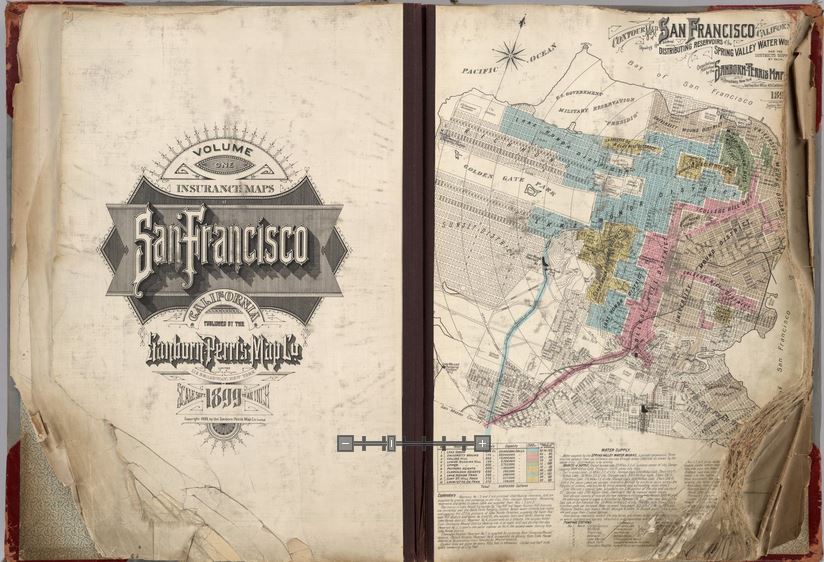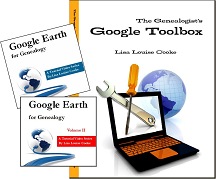Blog

100-Year Old Time Capsule Opens
Exactly one hundred years ago on April 22, a time capsule was buried in the basement of the First English Lutheran Church in Oklahoma City, Oklahoma, U.S.A. During a ceremony this April 22, a crowd that included the governor oversaw the opening of the “Century Chest.”
The entire ceremony was captured on video. Skip ahead to the good part, where they start opening the packages in the enormous box, at about 1 hour and 10 minutes into the video. You’ll see a prize-winning plate from the state fair, an old desk telephone with its bright green cord still wrapped around it, an Edison phonograph machine, artwork, photos, newspaper articles, clothing, a pen used by U.S. President McKinley to sign the Free Homes Bill and more!
My question for you: what would YOU put in a 100-year time capsule? Leave your comments.

Online Historical Maps: From David Rumsey to the DPLA

Opening pages of rare 1905 Sanborn Map of San Francisco, showing city just before 1906 earthquake. Find the entire map book at the David Rumsey Historical Map Collection
Genealogists rely on historical maps to help us navigate the geography of our ancestors’ lives. One of the most important resources available online is the David Rumsey Map Collection. Well, Rumsey recently announced on his website that he will be making more than 38,000 of his historical maps–everything he’s currently got online–available at the Digital Public Library of America (DPLA).
I blogged recently about the DPLA, which aims to create an enormous, free digital library we can all access online. It will be great to have the Rumsey map collection searchable on the DPLA so we can search these maps while we look for any other sources on any particular location our ancestors lived. “Maps tell stories that complement texts, images, and other resources found in the growing DPLA library,” says Rumsey. “And the open content policies of my online library fit perfectly with DPLA’s mission to make cultural resources freely available to all.” He applauds what the DPLA is trying to accomplish and even encourages other collectors to donate content.
Rumsey has spent years collecting thousands of old maps and putting them online. Now he’s working to share them even more widely. His entire collection of about 150,000 maps will eventually be housed at Stanford University. Meanwhile, we can all enjoy the thousands of images we can search on his site or at the DPLA.
Google’s free program Google Earth includes nearly 150 historic maps in the Layers panel. You can also add historic maps downloaded from Rumsey’s site to Google Earth by using the Overlay feature. My video tutorial series called Google Earth for Genealogy will show you how. You can also get step-by-step instructions in my book The Genealogist’s Google Toolbox. Or get them all in a discounted bundle.

Danish Version of WDYTYA Being Filmed
T he Danish Broadcasting Corporation is filming its own version of “Who Do You Think You Are?”–which we’ve learned via two U.S. newspapers!
he Danish Broadcasting Corporation is filming its own version of “Who Do You Think You Are?”–which we’ve learned via two U.S. newspapers!
According to the Bureau County Republican and the NewsTribune (Illinois Valley), popular Danish actress Suzanne Bjerrehuus was in the area filming stories of her great-great-grandparents, who emigrated from Denmark to the American Midwest in 1869. (They apparently left behind one of their six children, from whom Bjerrehuus descends.)
As part of her whirlwind family history tour, Bjerrehuus reportedly visited the Danish Immigrant Museum in Elk Horn, Iowa. If you have Danish roots, you should probably check out their website. They have a Family History & Genealogy Center, which specializes in helping people find links to their Danish immigrant past. They provide research and translation services and they’ve helped people connect with long-lost relatives in both Denmark and the United States.




